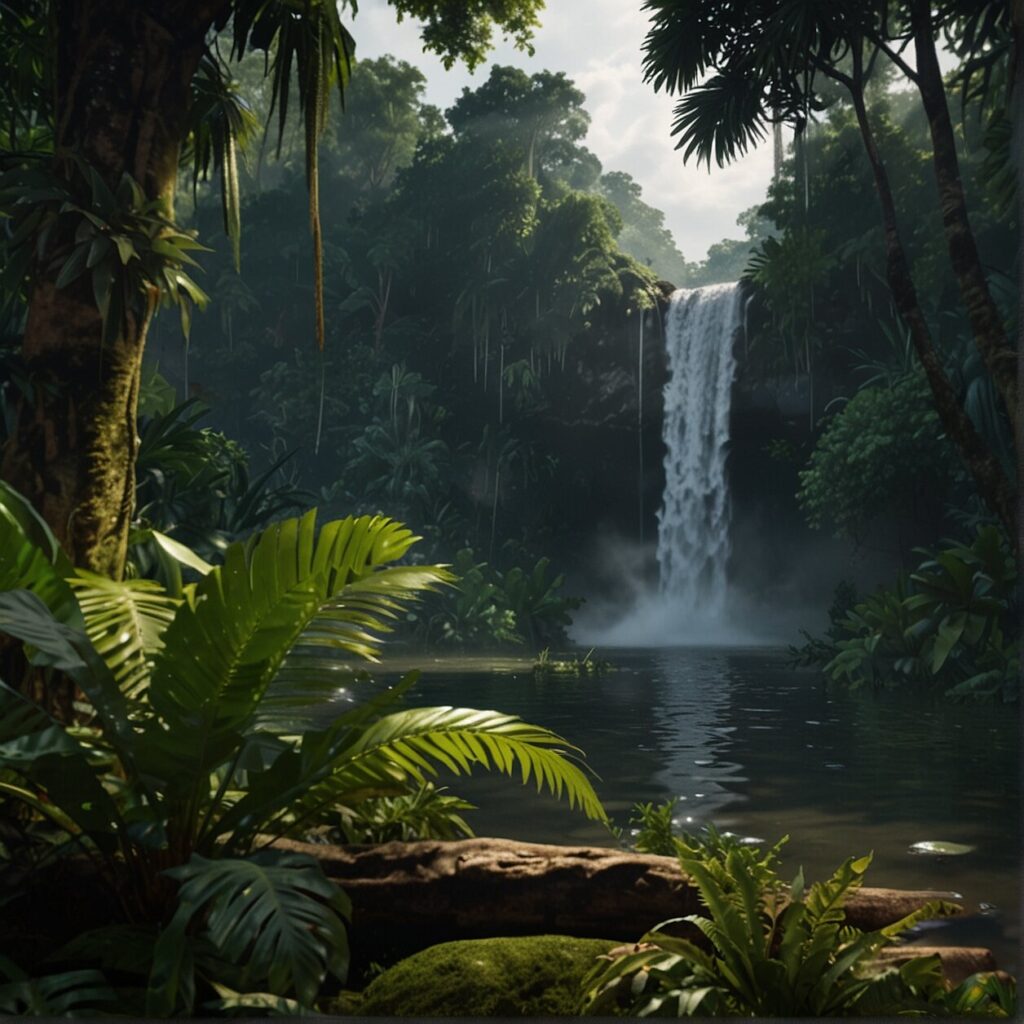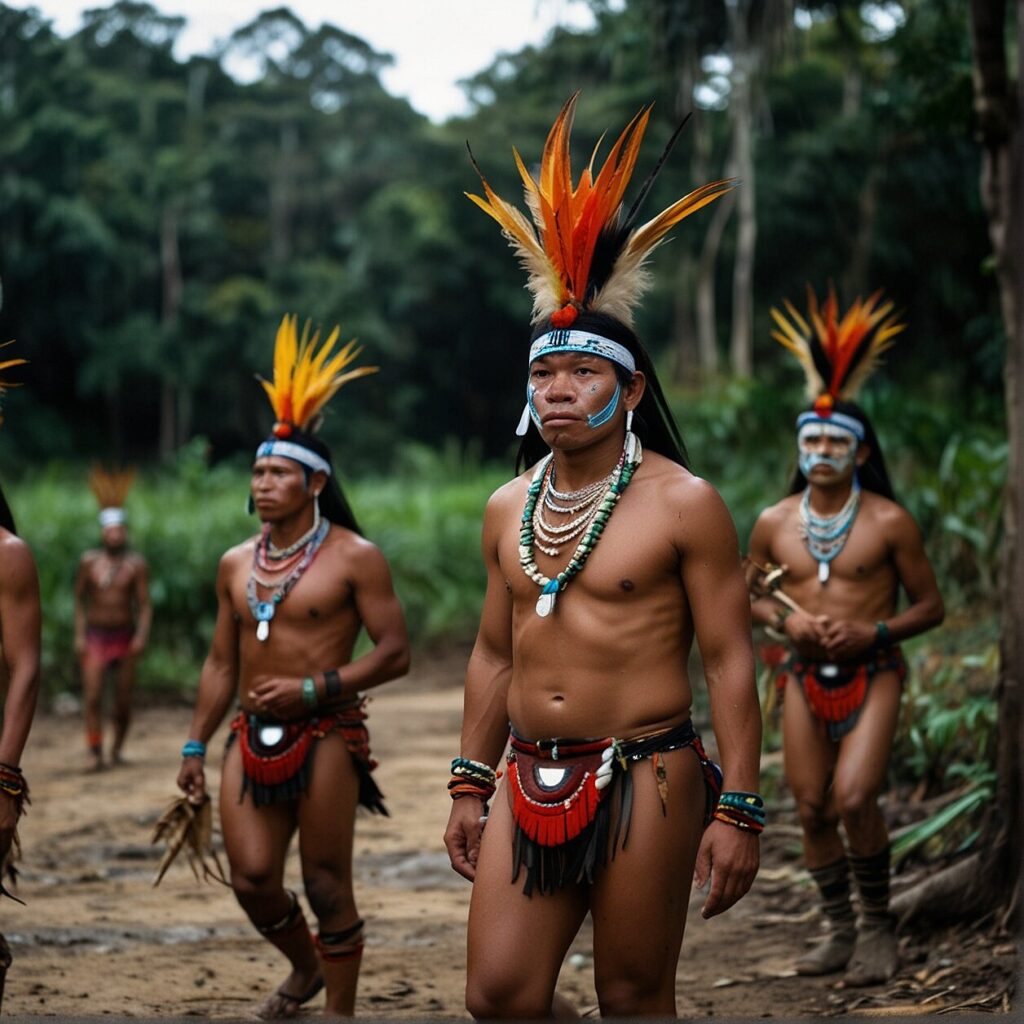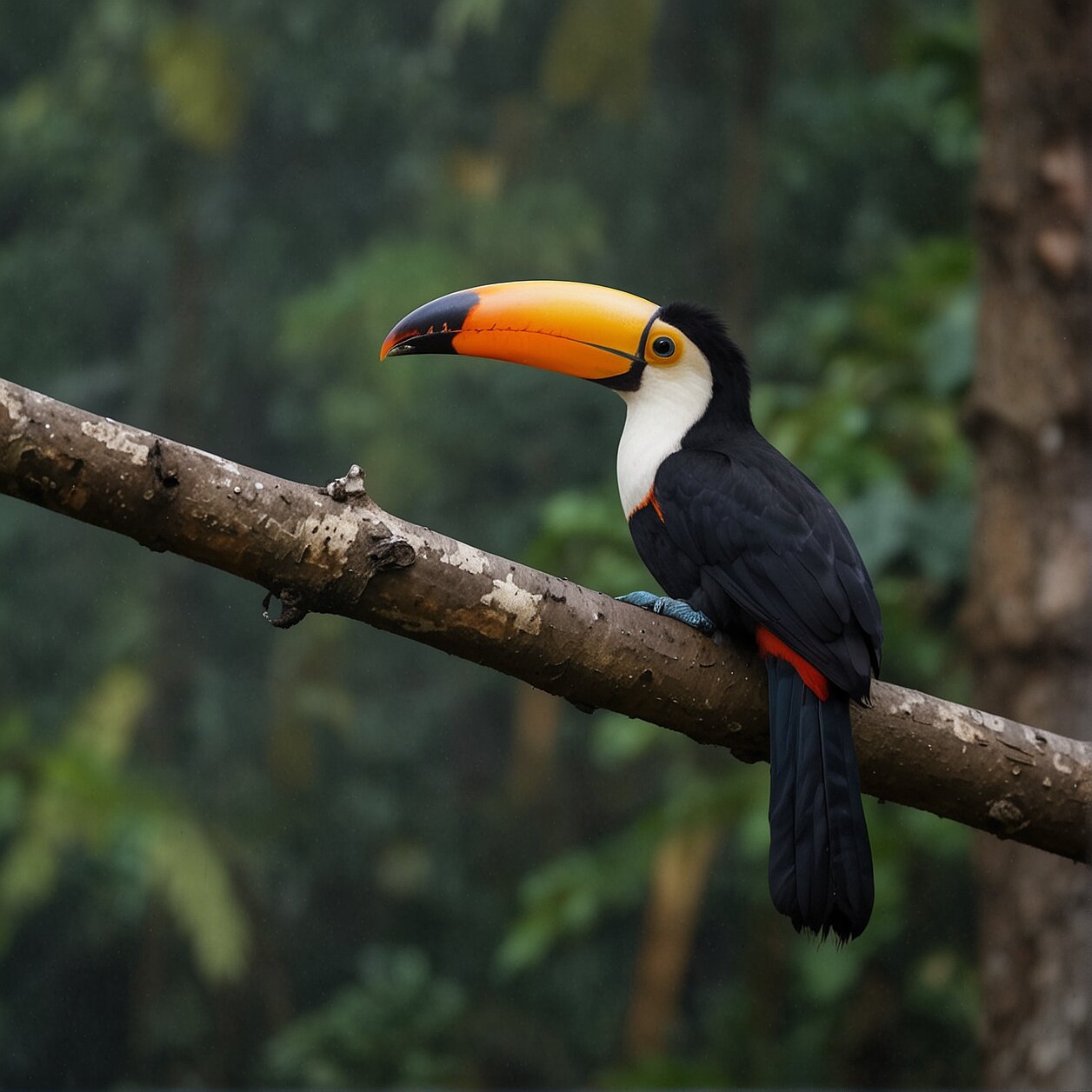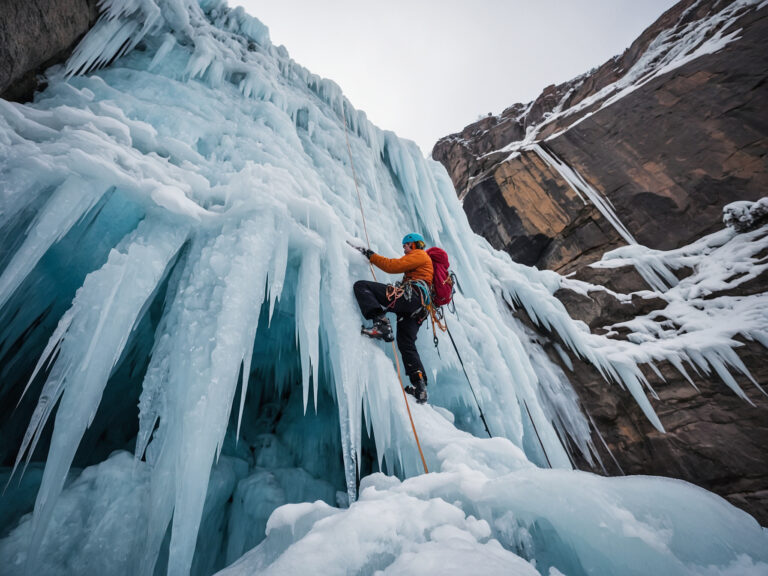Exploring the Amazon Rainforest’s Unique Inhabitants
Welcome, adventurous souls, to the magnificent and sprawling canvas of Mother Nature that is the Amazon Rainforest! Bursting with lush, wild greenery and an astounding array of beautiful creatures, the Amazon is indeed a spectacle of life and biodiversity unparalleled anywhere else on our planet. Step right in and embark on the journey of a lifetime.
- Did you know that the sheer size of this vast terrain dwarfs numerous countries? Stretching over a whopping 2.6 million square miles, this rainforest radiates through nine countries – Brazil, Colombia, Peru, Venezuela, Ecuador, Bolivia, Guyana, Suriname, and French Guiana. Not just a green wonderland, it’s a thriving bubble of life, housing 30% of the world’s species.
- Do you fancy an encounter with curious monkeys or colorful toucans? Or how about a nighttime serenade from the symphony orchestra of the insects? Every little moment within the Amazon can be fascinating! Victorious tales of survival, unseen sights of dreamy wildlife, whispers of the trees – it’s a narrative awaiting your eager ears.
- Feel a rush of adrenaline as you traverse the mighty Amazon River, the lifeline of the rainforest. As the largest river system in the world, its waterways offer not just an essential highway for wildlife but also a thrilling journey for those adventurous enough to explore it.
“When one tugs at a single thing in nature, he finds it attached to the rest of the world.” – John Muir
By visiting the Amazon, you are not merely signing up for a buoyant carnival of nature, but also enlisting in a unique environmental cause. For sure, you desire to contribute positively to this ecosystem, not harm it. Adhering to responsible tourism practices during your visit is pivotal, and we are here to guide you through it. Discover, explore, marvel, and inspire – all the while ensuring the resplendent Amazon continues to thrive for generations to come. You’re up for an adventure of a lifetime; are you ready to leave a footprint that counts? If so, dive in!
Unraveling the Mysteries of the Amazon’s Biodiversity
Imagine stepping into a vast green ocean on land, where nearly a tenth of the world’s wildlife calls home. Yes, we are talking about the Amazon – a world teeming with a dizzying array of colorful fauna and flora, an awe-inspiring testament to the wonder of natural evolution. With an estimated 390 billion individual trees, 16,000 species of trees, 2.5 million insect species, 2,200 fish species, 1,300 bird species, 430 mammal species, and 400 billion individual ants, it comes as no surprise that the Amazon is the richest and the most biodiverse region on Earth.
But as majestic as the stats sound, what do they really mean? How has this breathtaking biodiversity come about? Experts believe a number of factors contribute to this unrivaled growth. A consistently warm and wet climate throughout the year perfectly fuels the cycle of plant growth and reproduction, drawing in a vast array of animals to partake in the feast. The Amazon’s old age (nearly 55 million years!) and its stability also lend to its rampant diversification.
In turn, this rich variety of life is instrumental in maintaining the balance of our planet’s health. The Amazon plays a key role in global carbon storage, climate regulation, and is a complex network of habitats that supports a mind-boggling range of species. Quite fittingly, the region is often referred to as the ‘Lungs of the Earth’.
So dive in, explore, and enjoy the awe-inspiring Amazon – but do remember, maintaining this dynamic balance of life is crucial for the health of the world. Let’s tread gently and respect the precious splendor the rainforest has to offer. It’s not just about seeing the sights, it’s also about safeguarding them for future generations.

Extraordinary Creatures of the Amazon Rainforest: A Closer Look
Brace yourself, for you’re about to embark on a journey into a world where biodiversity reigns supreme. A place home to an array of spectacular creatures and organisms that would astound even the most well-travelled of naturalists. Get ready, adventurer, we’re taking a closer look at the extraordinary creatures of the Amazon Rainforest.
Imagine a place where the buzzing of insects is a symphony, where every flutter of wings is a verse in the ballad of wilderness. That’s where we’re headed. You may know that the Amazon Rainforest is home to the largest collection of living species in the world, an estimated 400 billion individual animals, to be precise, but there’s so much more to know and experience.
Let us begin with the jaguars. Majestic and powerful, these stunning creatures are at the top of the food chain and reign over the Amazonian ecosystem. But they are not the only kings; there are others too, like the capybaras, the largest rodents in the world, and the energetic spider monkeys, known for their uncanny agility and unparalleled brachiation skills.
But it’s not just about the big animals, but the small ones too. From the spellbinding Blue Morpho butterfly with its iridescent wing, the industrious leaf-cutter ants each parading with their own tiny bit of leaf, to the millions of undiscovered species of bugs and insects, the Amazon Rainforest is nothing short of a fairy tale for anyone who appreciates the wonders of the natural world.
Then there’s the turn of the magnificent bird kingdom. Scarlet macaws, toucans, and hummingbirds, each ushering a burst of color and a melody of their own and adding to the chorus of the Amazon Rainforest. And then, we have the fascinating variety of reptiles and amphibians – a daring universe of its own with anacondas and caiman crocodiles at one end, and adorable tree frogs and poison dart frogs at the other.
Remember, however, as we admire these fascinating creatures, their home is under enormous threat. It is our responsibility to respect their habitat and support conservation efforts to preserve this irreplaceable ecosystem for future generations.
Responsible Tourism: Leave No Trace in the Amazon
When you’re lucky enough to visit the incredible Amazon rainforest, remember, it’s vital that you play your part in its preservation. The principle of ‘leave no trace’ is more vital now than ever before.
Leave no trace, for the unacquainted, is an outdoor ethics philosophy that promotes responsible interaction with natural environments. The idea is simple yet powerful. As a visitor, your goal should be to have zero impact on the environment you’re exploring – leaving it just as you found it for future generations.
What does this mean for you as a traveler? Primarily, this involves refraining from littering, damaging flora or fauna, and altering the environment in any way. Discard waste properly, stick to designated trails, respect wildlife, and leave what you find. Your actions today will have a long-lasting effect on the future of this magnificent ecosystem.
Know that even the smallest of actions can make a significant difference. For example, to minimize your footprint, use biodegradable products, consume locally sourced food and water, and conserve resources wherever possible. This principle extends beyond your immediate actions too. When you are shopping for souvenirs, for example, support local artisans instead of buying products that exploit the environment or indigenous cultures.
Lastly, always remember to respect the local communities and their customs. The Amazon is home to many indigenous tribes, and your visit is an opportunity to learn and experience diverse cultures. However, this must be done sensitively and respectfully.
Always remember, the Amazon is not just a tourist site, but a living, breathing ecosystem that supports countless lives. By following ‘Leave no trace’ principles, you’ll ensure your visit is a positive experience for both you and the Amazon.

Encountering the Indigenous Tribes: The True Guardians of the Amazon
The multitude of indigenous tribes living in the heart of the Amazon might seem remote, but the reality is that their journey is intertwined with every breath we take. No matter where you stand in the world, the oxygen you breathe is part-dispatched from the vegetation these guardians protect.
Over 400 distinct indigenous groups call the Amazon rainforest their home, each with their unique cultures, traditions, languages, and ways of life. From the Ashaninka, Yanomami, to the Kayapo, their profound understanding of the forest’s ecosystem, perfected over centuries, makes them the ideal custodians and conservationists.
Imagine paying a visit to the Huaorani tribe, renowned for their skill in using blowguns. Witness first hand their deep ingrained respect for the forest, as they live sustainably, hunting and gathering, using every part of their catch, wasting nothing. This is a lesson to us all in true sustainability.
By engaging responsibly with these tribes during your visit, you take away more than just memories. You become part of a worldwide effort to appreciate, understand, and protect their ways of life. Why? Because their survival is intrinsic to the preservation of the Amazon rainforest, and thus, the very survival of our planet.
Remember, when you encounter these tribes as a visitor, you are entering their home. Approach with respect, an open mind, and a willing heart. Learn from their wisdom, share in their joy, but most importantly, heed their warnings and help ensure their story – and the story of the Amazon Rainforest – lives on.
Conservation Efforts: Protecting the Lungs of the Earth
As a visitor to this magical realm, you become part of the ongoing efforts to safeguard its unparalleled biodiversity. Conservation in the Amazon is a cause for global concern, and direct involvement in protecting its richness allows you to make a difference. Recognized as the “lungs of the Earth”, the Amazon Forest absorbs large amounts of carbon dioxide, plays a key role in mitigating global climate change, and produces 20% of the world’s oxygen.
The sheer scale of the Amazon rainforest presents unique challenges for conservation. It spans nine countries and contains about 400 billion individual trees. Therefore, the range of conservation activities is as diverse as the ecosystem itself. Forest restoration projects target depleted areas, while monitoring initiatives keep an eye on the health of the ecosystem and detect the illegal activities that are so harmful to it.
One of the most active contributions you can make to the conservation of the Amazon is to support the local economy. This can be done by purchasing locally sourced products, using local guides for tours, and staying in accommodations run by the locals. These activities generate revenue for people who have the most intimate relationship with the forest and who are best placed to protect it.
Educational efforts are equally critical. Spreading the word about the richness of the Amazon and the threats it faces encourages more people to make responsible choices that prioritize its health. This includes avoiding products linked to deforestation or illegal logging, choosing tour operators that respect animal habitats, and donating to organizations that promote sustainable development in the region.
Your journey into the heart of the Amazon has the power to raise awareness and inspire change. Every action, however small, contributes to the survival and prosperity of this irreplaceable realm. Embrace this responsibility and become part of the collective effort to protect the lungs of the Earth.
FAQ’S
Excellent, you’ve made it to our FAQ section, where we help answer those burning queries you have regarding the Amazon Rainforest! We know the unusual biodiversity and the conversations around responsible tourism can lead to several questions. It’s a complex and captivating place after all. So hold onto your explorer hat as we dive into your most commonly asked questions.
What are the best practices for responsible tourism in the Amazon?
Firstly, it’s essential to understand that responsible tourism revolves around respecting the environment and the local communities. So, let’s dive into the ways you can show your respect for the majestic Amazon on your next trip.
When you’re visiting the rainforest:
- Find knowledgeable, local guides: Choosing tour operators who are vested in the area’s conservation and have an intimate knowledge of its ecosystem serves a dual purpose. You’ll experience the Amazon enthusiastically and responsibly, while also providing vital economic support to the indigenous communities.
- Stick to marked trails: Avoid wandering off the established paths. The Amazon’s thriving flora and fauna often exist in delicate eco-balance, and venturing off the beaten path might disturb their habitats.
- Be careful about waste: Dispose of your garbage responsibly and make sure to carry out everything that you brought in. Plastic or any other waste left around can endanger wildlife.
And while engaging with the local communities:
- Respect cultural practices: Indigenous tribes in the Amazon have a rich cultural heritage. Learn about their customs before your visit and always seek permission before photographing people or sacred sites.
- Mindful souvenir shopping: Avoid buying souvenirs that promote damage to the rainforest, such as products made from endangered plants or exotic animals.
In all your actions, remember to recognize and value the Amazon’s unparalleled biodiversity. Your responsible tourism efforts will contribute to sustaining this magnificent rainforest for future generations to marvel at and learn from.
How can I support the preservation of the Amazon Rainforest during my visit?
Supporting the preservation of the Amazon Rainforest during your visit can seem daunting but is essentially about mindful behaviors and choices. Being a responsible tourist as you revel in the splendors of the forest, is key.
Start by choosing tour operators who practice responsible tourism. They should have a clear sustainability policy, contribute to local economies, and tread lightly on the environment. This holds true for your lodging choices as well. Look for accommodations that respect the environment and invest in the community.
Additionally, sticking to marked trails when exploring is vital. Straying off the beaten path can damage plants and disrupt wildlife habitats. If you are visiting protected areas or reserves, make sure to comply with all rules and regulations. These places often serve as critical habitats for endangered species and have been carefully managed to balance tourism and conservation.
Minimize your waste as much as possible. Carry a reusable water bottle, avoid single-use plastics, and pack out what you pack in. Moreover, resist the temptation to take souvenirs from nature. Whether it’s a beautiful feather, a unique rock, or a piece of a plant, removing it can disrupt the ecosystem.
Lastly, you can support local communities and conservation efforts by purchasing from local artisans, eating at local restaurants, and donating to well-regarded conservation organizations. Remember, your choices can boost local economies and empower communities to continue preserving this natural wonder.
What are some of the most unique plants found in the Amazon rainforest?
Fasten your seat belts because we’re about to embark on a journey through the Amazon’s exceptional flora. A cornucopia of unique plants await us, demonstrating how nature’s ingenuity blurs the lines between the real and the surreal.
The Victoria Amazonica, known as the giant water lily is one of the Amazon rainforest’s most iconic plants. These majestic aquatic plants boast leaves that can reach up to 3 meters in diameter, often mistaken for floating islands by passing wildlife. At twilight, their delicate, white, bloom opens, gradually turning pink by the second day.
No less captivating is the Passion Fruit plant, a climbing vine with intricate cascades of helical tendrils and intricate flowers. Its fruits, filled with sweet-tangy pulp, provide a feast not only to humans, but also to a plethora of animals residing in the amazon.
Now imagine, a plant that catches rain. Meet the Bromeliads. These plants have evolved to form petal-like structures that act as reservoirs for rainwater, thus providing hydration not just to themselves but also to numerous aquatic organisms that dwell within these natural troughs.
Behold the Walking Palm, a plant straight out of a fantasy novel. Contrary to traditional trees, the walking palm develops new roots that grow towards light, while the older ones on the shadowed side die off. This curious adaptive mechanism gives the illusion that the tree is ‘walking’ through the forest floor.
Rounding off our journey is the carnivorous Amazon Pitcher Plant. This beguiling plant lures insects with its nectar-filled ‘pitcher’. The unsuspecting prey, once inside, become trapped and are slowly digested to supplement the plant’s diet in nutrient-poor soil.
The Amazon rainforest is much more than a wealth of unique plants. It’s a masterclass in evolution’s creativity and adaptability, presenting constant surprises that remind us of the richness of biodiversity we stand to lose if we don’t protect these sacred places. So, as you navigate this vibrant jungle, remember to stop and marvel at the wonders quietly unfolding under the canopy of emerald green.
What are some sustainable travel tips for visiting the Amazon rainforest?
When heading to the Amazon, there’s more to think about than just your itinerary. How you travel can have a significant impact on this delicate ecosystem. So, let’s explore some sustainable travel tips that can make your adventure more eco-friendly and respectful to the local culture.
1. Plan with eco-friendly operators: Begin your journey sustainively by choosing tour operators committed to environmental stewardship. They minimize the environmental footprint, contribute to local communities, and prioritize the wellbeing of the forest and its inhabitants.
2. Respect wildlife: Your encounter with exotic creatures should be non-disruptive. Never feed or approach animals too closely, as it may disturb their natural behaviour or diet.
3. Reduce, Reuse, Recycle: Practice the 3 R’s of sustainability. Avoid disposable items like plastic water bottles. Bring your own eco-friendly supplies like reusable water bottles, biodegradable toiletries, and bags.
4. Follow guides and marked trails: Keep to the designated trails when hiking in the Amazon, ensuring minimal impact on plants and animal habitats. Your guide is your best resource for navigating the forest responsibly.
5. Learn about the local culture: Engage in activities that allow you to understand indigenous traditions, respect their customs, and contribute to their livelihood. Purchasing local handcrafted merchandise can be a good way.
Remember, your actions in the Amazon can either contribute to its conservation or further degradation. Therefore, let’s ensure we tread lightly, making positive contributions to this unique and fragile microcosm of life.
What are some cultural practices of indigenous communities in the Amazon rainforest?
Stepping foot into the Amazon rainforest is akin to entering a world deeply suffused with the traditions of the indigenous communities that call it home. Each tribe has a collection of unique cultural practices that have been passed down through generations, allowing them to coexist symbiotically with the rainforest. Let’s touch on a few of these practices to better acquaint you with the rich tapestry of human life that thrives amidst the Amazon’s biodiverse ecosystem.
Many indigenous tribes, such as the Yanomami, engage in Shabono, an architectural tradition, creating communal houses that are designed to harmonize with the environment. The walls made of palm leaves and the conical, thatched roofs are not only environmentally friendly but also provide a suitable shield against the heavy rains and hot sun of the Amazon.
Tribes like the Kayapo utilize a method known as Slash and Mulch, an eco-friendly farming method. This practice involves applying mulch to the cultivated area, stimulating the soil’s nutrient cycle without causing deforestation, as opposed to the more destructive slash-and-burn methods.
Ceremonies and spiritual rituals are central to the lives of these tribes, with many linked directly to the rainforest. Ayahuasca, a spiritual ceremony involving a psychoactive brew made from local plants, is one such practice prevalent among tribes such as the Shipibo-Conibo tribe. The ritual, which is believed to bring about healing and spiritual enlightenment, stands as a testament to the tribe’s intimate relationship with the forest and its flora.
Indigenous tribes also possess a trove of knowledge about the Amazon’s biodiversity. Locals, for instance, are known to use forest therapy — using medicinal plants to treat a wide array of illnesses. This is an example of how thousands of years of living in the Amazon have enriched indigenous tribes with invaluable knowledge and deep understanding of the forest’s biodiversity.
While exploring the Amazon, it’s crucial to respect these and other cultural practices. Always remember, these tribes are not just local inhabitants; they are, in essence, the rainforest’s guardians, maintaining its balance through their deep-seated regard for nature. As such, understanding these practices is a vital part of responsible tourism in the Amazon.







